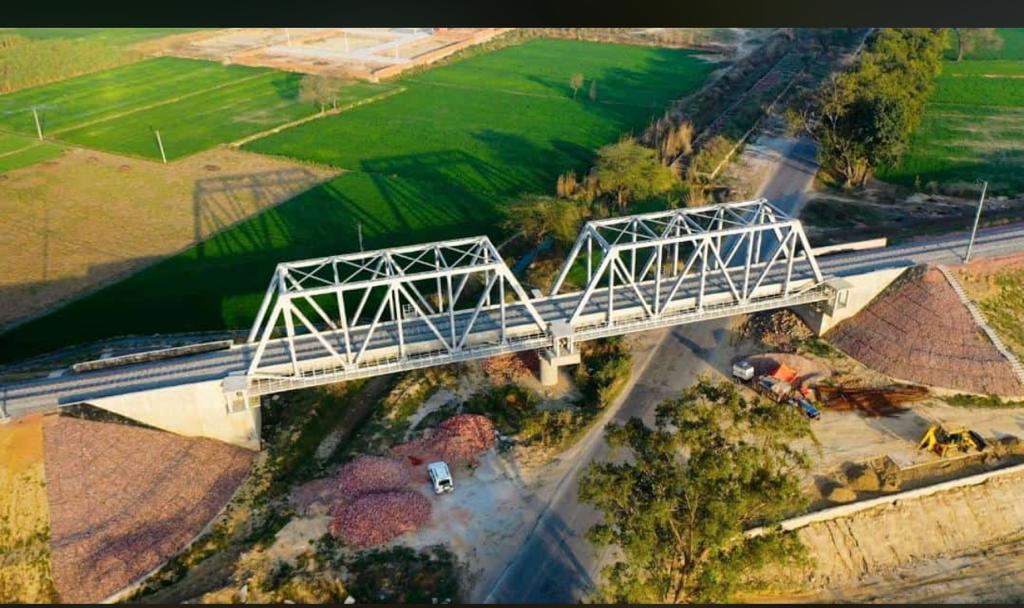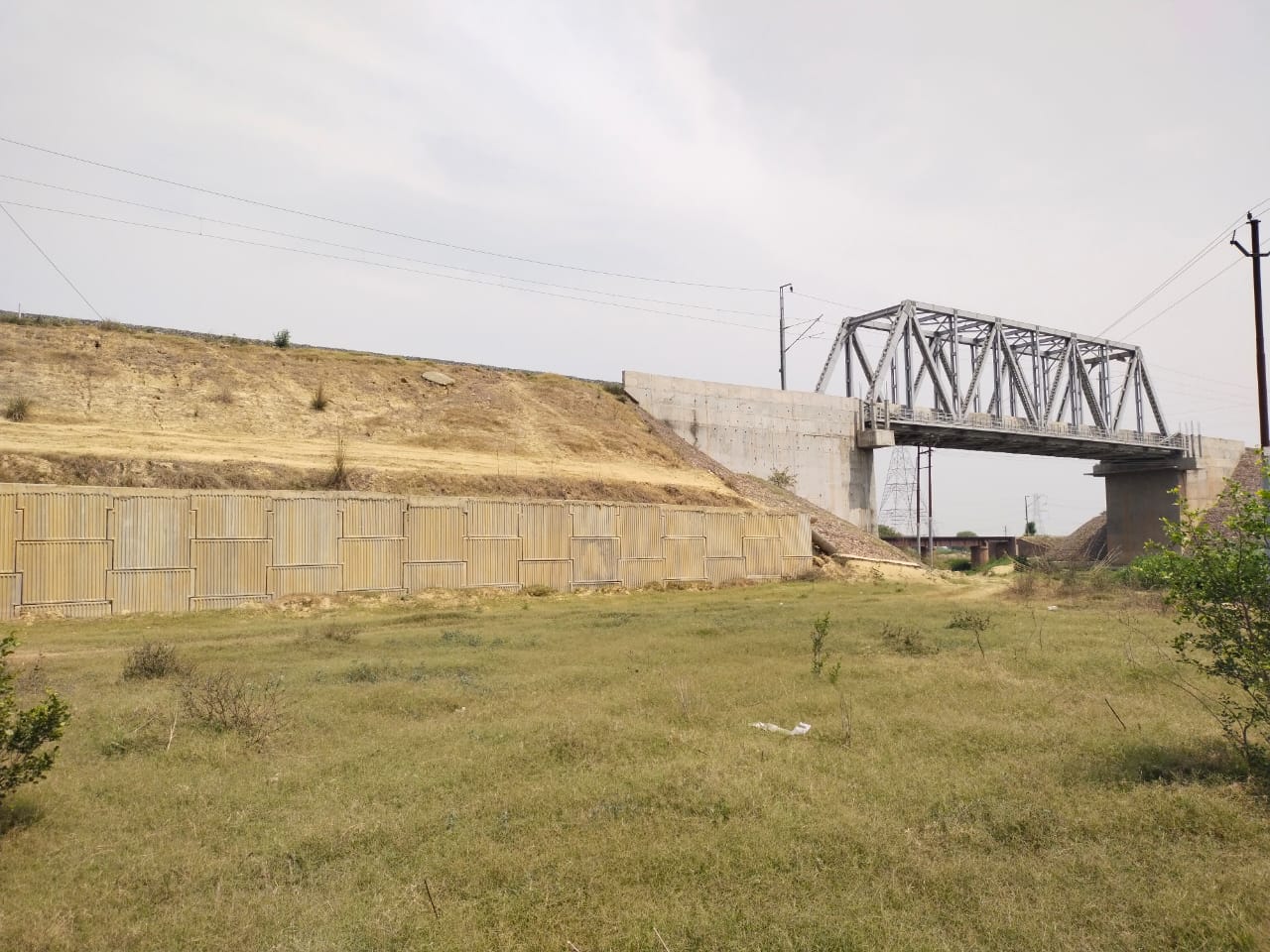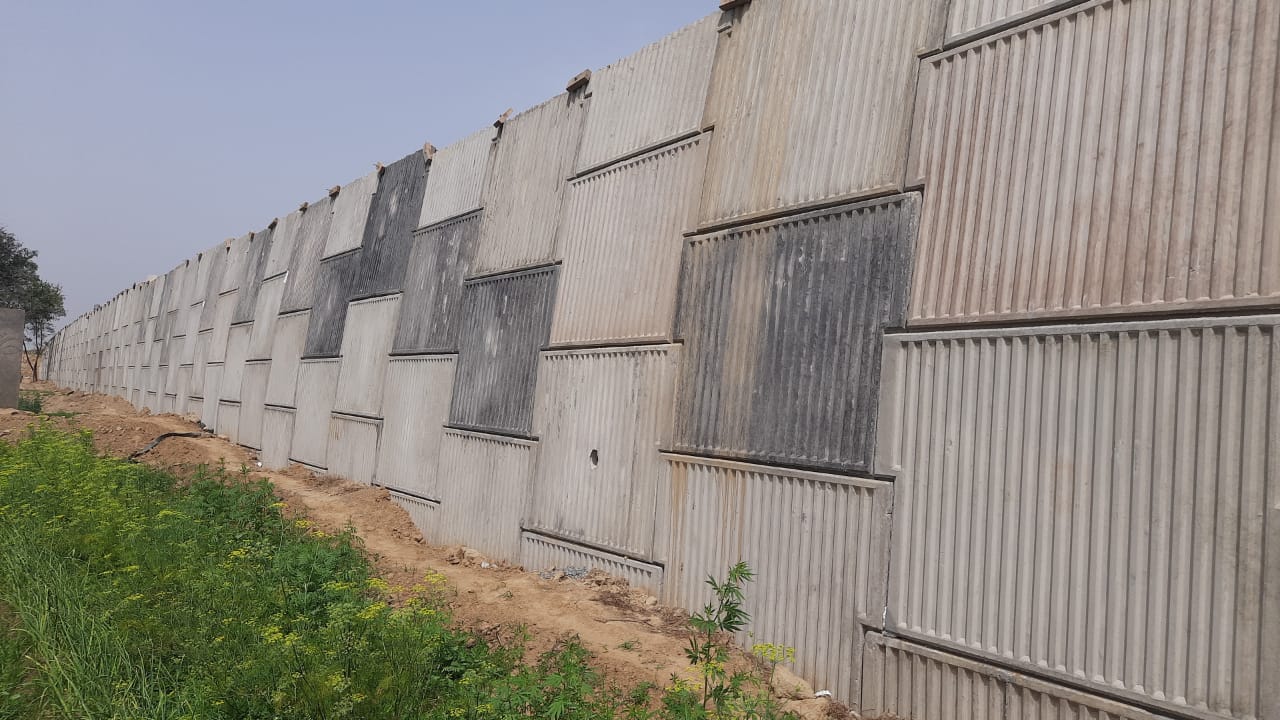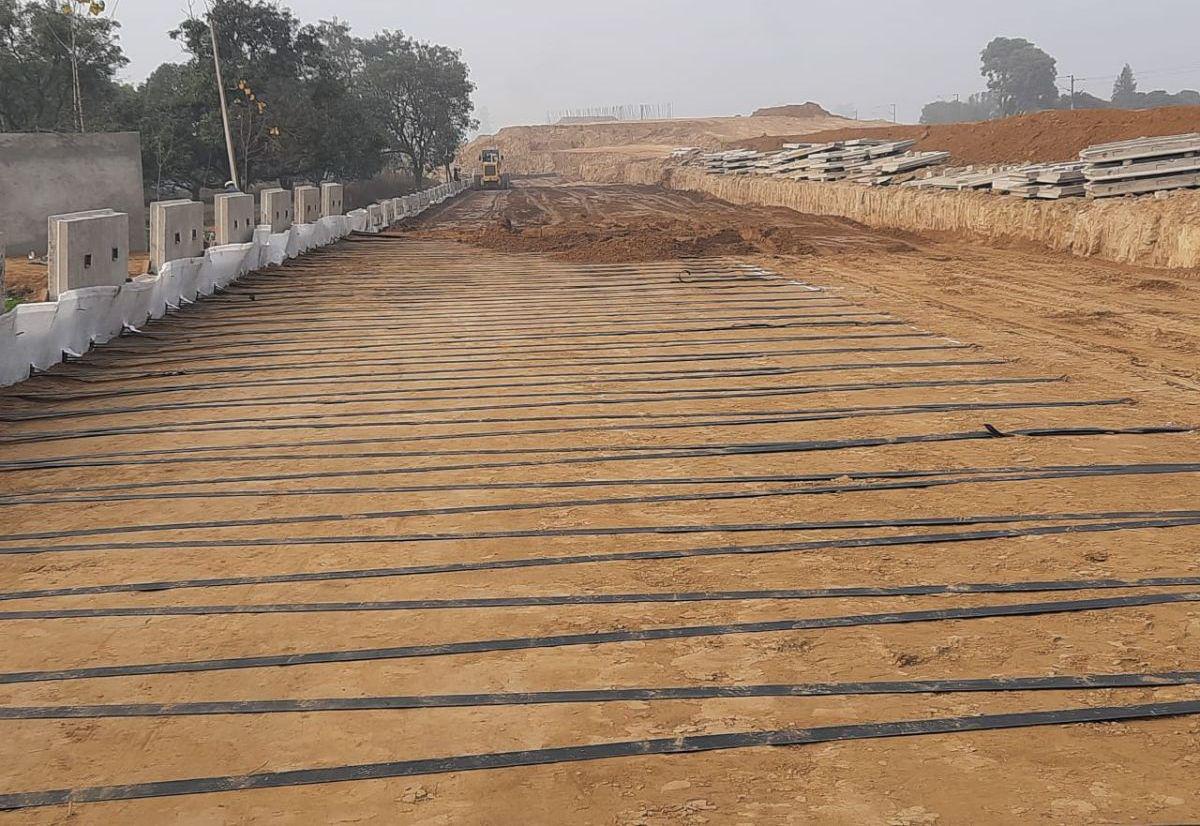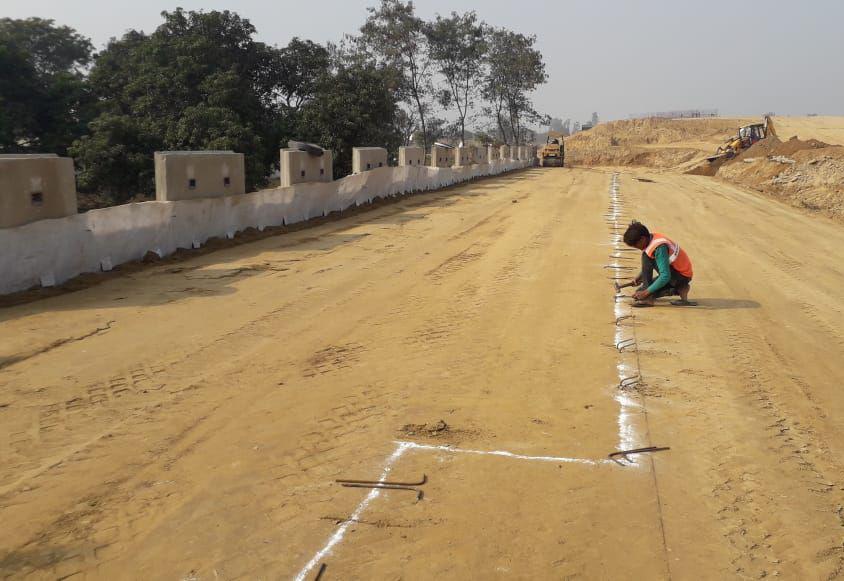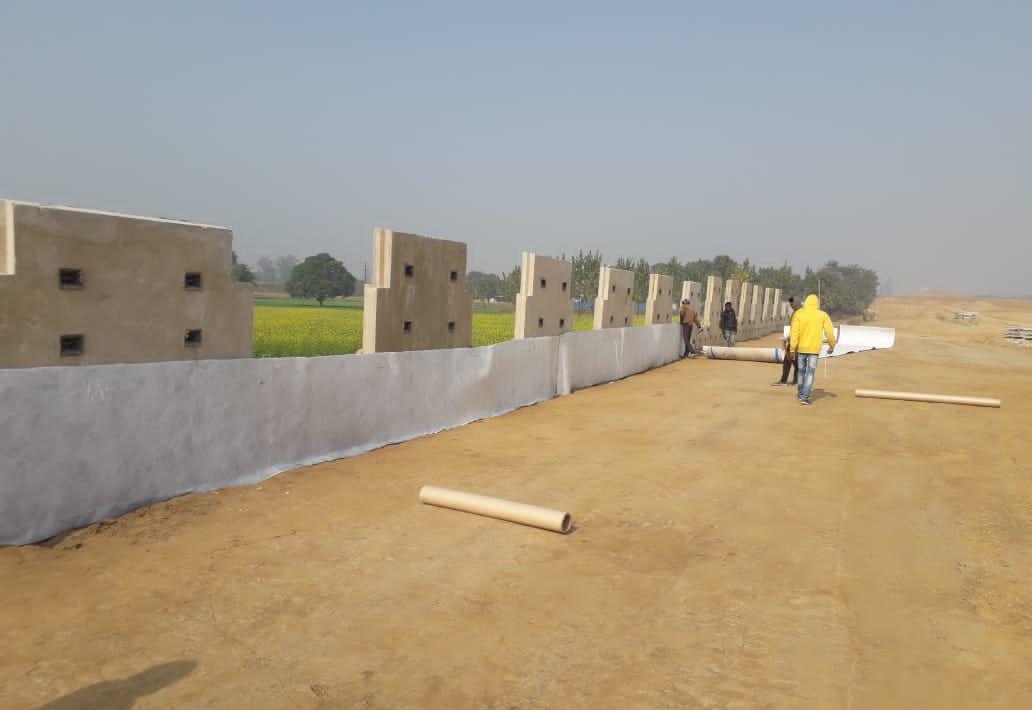18 April 2024
MacRes System at Khurja to Pilkhani Railways
A vertical Reinforced Soil (RS) wall system with T-shaped concrete facing panel connected to Paraweb® geostrips as primary reinforcement, using MacBox cavity connector was installed along the section Khurja to Pilkhani.
Maccaferri’s MacRes system was adopted by DFCCL over conventional solutions as it is ideal for locations with ROW & large embankment heights.
Dedicated Freight Corridors (DFC) are being planned to provide fast and on-time passage for goods rail vehicles. India’s Western and Eastern Dedicated Freight Corridor will decongest the railway network by diverting 70% of India’s goods trains to these two corridors. The Eastern Dedicated Freight Corridor (EDFC), a specialized freight railway under construction between northern & eastern India by Indian Railways, will stretch from Ludhiana, Punjab, to Dankuni, West Bengal, covering 1839 kilometers. Most of the EDFC has double tracks, but a section from Ludhiana in Punjab to Khurja in Uttar Pradesh will be single-tracked due to the non-availability of space along the existing corridor. This corridor is divided into multiple sections for contracting purposes. Among these, one of the proposed sections was from Khurja to Pilkhani in the state of Uttar Pradesh. The Dedicated Freight Corridor Corporation of India Ltd (DFCCIL) wanted to propose retaining structures to support the formation because of limited right-of-way and large embankment height.
The DFCCIL selected the MacRes system with precast concrete panels as fascia and Paraweb as reinforcement among various reinforced soil (RS) wall options as the best solution for the above problem due to its proven experience with railway loading. T-shaped panels with corrugations were used as fascia, and the connection between the panels and reinforcement was provided with patented MacBox (cavity connectors). Over the RS Wall, a 10m high embankment surcharge with a 1:2 slope was proposed with a 1.5m intermediate berm. The RS Wall was designed considering railway loading as per the ‘IRS Code of Practice for the Design of Sub-Structures and Foundation of Bridges’. The main highlight of this project was to maintain a 10m high surcharge over the RS Wall and ensure speedy construction. The RS Wall solution for this project was successfully implemented within a span of ten months.
To know more about this project write us at [email protected].
Read more about our vertical wall solutions by clicking on the link: https://www.maccaferri.com/in/solutions/vertical-walls-with-concrete-facing-panels/
